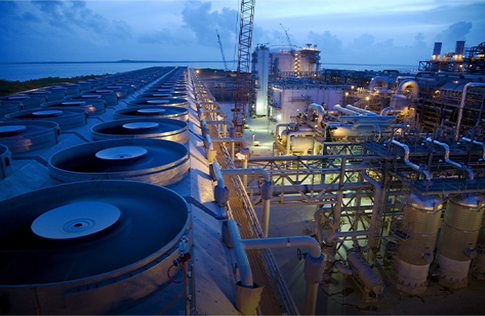-
Cangzhou Yulong Steel Co., Ltd.
-
Phone:
+86 13303177267 -
Email:
admin@ylsteelfittings.com
- English
- Arabic
- Italian
- Spanish
- Portuguese
- German
- kazakh
- Persian
- Greek
- French
- Russian
- Polish
- Thai
- Indonesian
- Vietnamese
- Zulu
- Korean
- Uzbek
- Hindi
- Serbian
- Malay
- Ukrainian
- Gujarati
- Haitian Creole
- hausa
- hawaiian
- Hebrew
- Miao
- Hungarian
- Icelandic
- igbo
- irish
- Japanese
- Javanese
- Kannada
- Khmer
- Rwandese
- Afrikaans
- Albanian
- Amharic
- Armenian
- Azerbaijani
- Basque
- Belarusian
- Bengali
- Bosnian
- Bulgarian
- Catalan
- Cebuano
- China
- China (Taiwan)
- Corsican
- Croatian
- Czech
- Danish
- Esperanto
- Estonian
- Finnish
- Frisian
- Galician
- Georgian
- Kurdish
- Kyrgyz
- Lao
- Latin
- Latvian
- Lithuanian
- Luxembourgish
- Macedonian
- Malgashi
- Malayalam
- Maltese
- Maori
- Marathi
- Mongolian
- Myanmar
- Nepali
- Norwegian
- Norwegian
- Occitan
- Pashto
- Dutch
- Punjabi
- Romanian
- Samoan
- Scottish Gaelic
- Sesotho
- Shona
- Sindhi
- Sinhala
- Slovak
- Slovenian
- Somali
- Sundanese
- Swahili
- Swedish
- Tagalog
- Tajik
- Tamil
- Tatar
- Telugu
- Turkish
- Turkmen
- Urdu
- Uighur
- Welsh
- Bantu
- Yiddish
- Yoruba

ធ្នូ . 22, 2024 05:22 Back to list
en 1092 1 flange standard
Understanding EN 1092-1 Flange Standard
In the world of engineering, especially in sectors involving piping systems, flanges play a crucial role in ensuring the integrity and reliability of connections. The EN 1092-1 standard is one of the most significant standards in this context, providing specifications and guidelines for flanges used in piping systems across various industries.
What is EN 1092-1?
EN 1092-1 is a European standard that outlines the requirements for flanges made from metallic materials. It focuses on the design, dimensions, and specific requirements for flanges used in both industrial and construction applications. The standard covers different types of flanges, including those made of steel and other metals, catering to various service conditions, pressure classes, and temperature ranges.
This standard is part of a broader series of EN 1092 standards, which encompass multiple aspects of flange design and application. EN 1092-1 specifically addresses circular flanges with a nominal size ranging from DN 10 to DN 4000. The dimensions and configurations specified in the standard ensure that flanges can effectively handle the mechanical loads and environmental conditions typical in industrial applications.
Key Specifications
EN 1092-1 specifies a variety of dimensions and types of flanges, including
1. Types of Flanges The standard includes several flange types, such as flat, raised face, and blind flanges. Each type serves a distinct purpose, and the choice depends on the specific requirements of the piping system.
2. Nominal Sizes and Pressure Ratings The standard provides guidelines for nominal sizes (DN ratings) and pressure ratings (from PN 2.5 to PN 400). This aspect is critical as it helps engineers select the correct flange based on the pressure and temperature conditions of the system.
3. Material Specifications The materials used for the flanges must meet certain criteria to ensure durability and compatibility with various fluids. EN 1092-1 outlines the acceptable material grades, which include carbon steel, stainless steel, and alloy steels, among others.
en 1092 1 flange standard

4. Surface Finish The surface finish of flanges is also addressed in the standard. Proper surface treatment allows for better sealing and helps prevent corrosion, ensuring the longevity of the connection.
5. Marking Requirements Each flange manufactured according to this standard must be marked with specific information, such as the manufacturer's details, material grade, pressure rating, and the standard number. This requirement ensures traceability and compliance with quality standards.
Importance of EN 1092-1
The significance of the EN 1092-1 standard cannot be overstated. By adhering to these specifications, manufacturers can ensure that their products meet industry requirements and can function safely and effectively in operation. Some of the key benefits include
- Enhanced Safety Properly designed and manufactured flanges reduce the risk of leaks and failures in piping systems, which can lead to hazardous situations.
- Interoperability With standardized dimensions and specifications, different manufacturers' products can be used interchangeably, facilitating repairs and modifications in existing systems.
- Quality Assurance Compliance with EN 1092-1 signifies a commitment to quality and reliability, which is crucial for clients in high-stakes industries such as oil and gas, chemicals, and water treatment.
- Regulatory Compliance Many industries are governed by strict regulations that mandate the use of certified products. Flanges built to EN 1092-1 help ensure compliance with these regulations, simplifying inspections and audits.
Conclusion
The EN 1092-1 flange standard is a cornerstone for flange design and application within piping systems in Europe and beyond. By setting clear guidelines regarding dimensions, materials, and performance, it not only enhances the reliability and safety of engineering solutions but also enables manufacturers and engineers to meet industry demands efficiently. Understanding and implementing the EN 1092-1 standard is essential for anyone involved in the design, manufacturing, or maintenance of piping systems, ensuring that they can deliver safe and effective solutions in their respective fields. As industries continue to evolve, adherence to such standards remains critical in navigating the complexities of modern engineering challenges.
Latest news
-
ANSI 150P SS304 SO FLANGE
NewsFeb.14,2025
-
ASTM A333GR6 STEEL PIPE
NewsJan.20,2025
-
ANSI B16.5 WELDING NECK FLANGE
NewsJan.15,2026
-
ANSI B16.5 SLIP-ON FLANGE
NewsApr.19,2024
-
SABS 1123 FLANGE
NewsJan.15,2025
-
DIN86044 PLATE FLANGE
NewsApr.19,2024
-
DIN2527 BLIND FLANGE
NewsApr.12,2024
-
JIS B2311 Butt-Welding Fittings LR/SR 45°/90° /180°Seamless/Weld
NewsApr.23,2024











